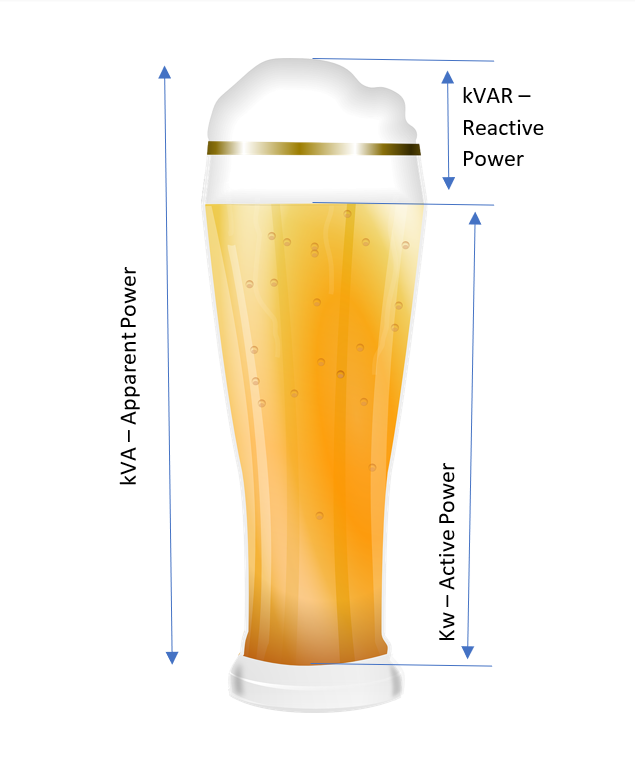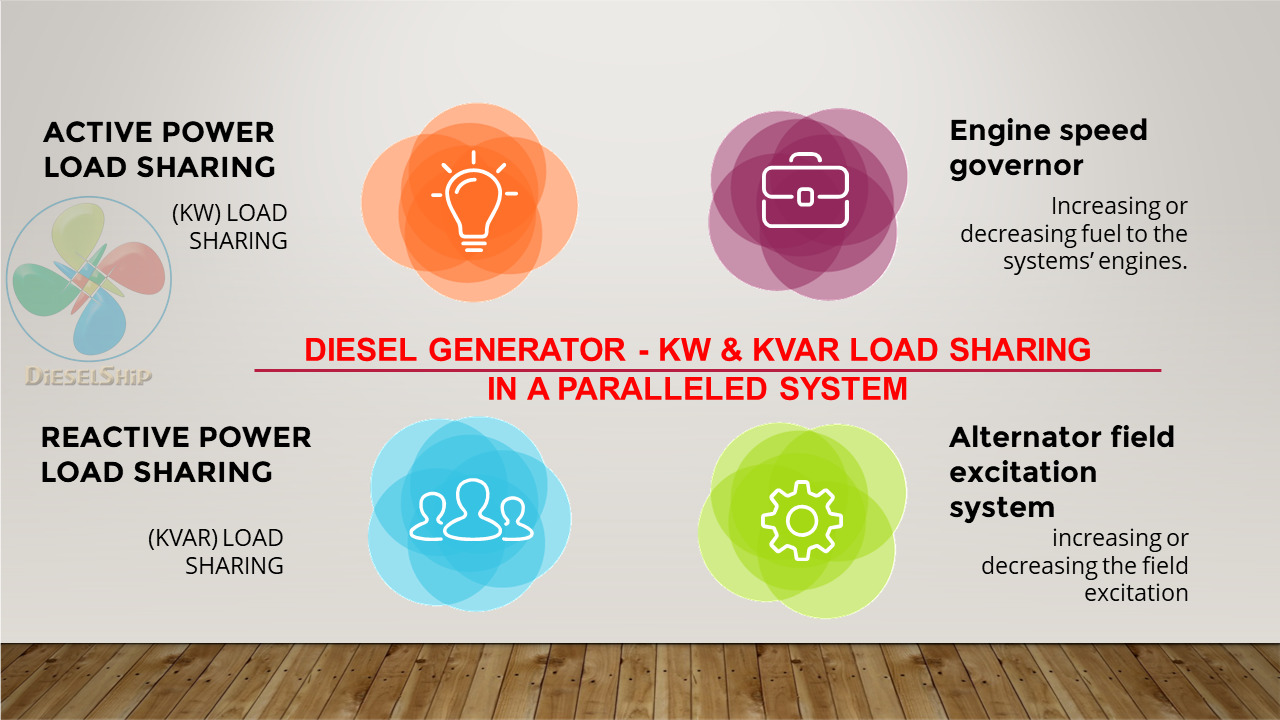Disclosure: This post contains affiliate links and I will be compensated if you make a purchase after clicking through my links. Learn More
Kvar stands for kilovolt-ampere reactive. It measures reactive power in a generator, which affects its efficiency.
Generators produce both active and reactive power. Active power (kW) does the useful work, while reactive power (kvar) sustains the magnetic fields in inductive loads like motors and transformers. Efficient generators manage both kinds of power to ensure optimal performance.
Excess reactive power can lead to inefficiencies and increased operational costs. Monitoring kvar helps in optimizing generator load and improving overall system reliability. Understanding the balance between active and reactive power is crucial for maintaining electrical systems. This balance helps prevent equipment damage and reduces energy waste, leading to cost savings and extended equipment life.

Credit: m.youtube.com
Introduction To Kvar
Understanding Kvar in generators is crucial for efficient power systems. Kvar stands for kilovolt-ampere reactive. It measures reactive power in an electrical system. Reactive power is essential for maintaining voltage levels.
Definition Of Kvar
Kvar is a unit to measure reactive power in AC circuits. Reactive power doesn’t perform any real work. It helps in maintaining the voltage. Kvar is crucial for the proper functioning of generators. Without reactive power, motors and transformers may not work properly.
Importance In Power Systems
Kvar plays a vital role in power systems. It helps in voltage regulation. Proper voltage levels are necessary for stable power supply. Kvar ensures efficient operation of electrical machines. It reduces the chances of power outages.
A table can help understand the importance of Kvar better:
| Aspect | Importance |
|---|---|
| Voltage Regulation | Maintains stable voltage levels |
| Equipment Efficiency | Ensures efficient operation of machines |
| Power Quality | Reduces power outages |
- Kvar is essential for AC circuits.
- It helps in maintaining voltage levels.
- Ensures the proper functioning of electrical machines.
Kvar is vital in power systems for stable operations. It ensures voltage stability and efficient machine operation.
Basics Of Reactive Power
Reactive power is crucial in electrical systems. It helps maintain voltage levels. This ensures the efficient operation of generators and electrical devices.
Active Vs Reactive Power
Active power is the actual power consumed by devices. It performs useful work, like lighting a bulb or running a motor.
Reactive power does not perform useful work. Instead, it helps maintain voltage levels. This is essential for the stability of the power system.
| Type of Power | Function |
|---|---|
| Active Power | Performs useful work |
| Reactive Power | Maintains voltage levels |
Role In Electrical Systems
Reactive power plays a key role in electrical systems. It ensures generators and transformers work efficiently.
- Maintains voltage levels
- Supports energy transfer in AC circuits
- Minimizes energy losses
Without reactive power, electrical systems would be unstable. Generators would face difficulties in energy transfer.
How Generators Produce Kvar
Understanding Kvar in generators is crucial for efficient power management. Generators do not just produce active power; they also generate reactive power, measured in Kvar. This section delves into how generators produce Kvar.
Generator Components
Generators consist of several key components essential for power generation.
- Stator: The stationary part that holds the windings.
- Rotor: The rotating part that creates the magnetic field.
- Exciter: Supplies the initial magnetic field to the rotor.
- Voltage Regulator: Controls the voltage output of the generator.
These components work together to convert mechanical energy into electrical energy, producing both active and reactive power.
Mechanism Of Reactive Power Generation
The mechanism of reactive power generation in generators involves several steps:
- Magnetic Field Creation: The exciter provides a current to the rotor, creating a magnetic field.
- Electromagnetic Induction: As the rotor spins, it induces a voltage in the stator windings.
- Voltage Regulation: The voltage regulator adjusts the voltage to maintain the desired output.
- Power Output: The generator produces both active and reactive power, with the reactive power measured in Kvar.
Reactive power is essential for maintaining voltage levels and ensuring the smooth operation of electrical systems.
Understanding how generators produce Kvar helps in optimizing their performance and improving power quality.
Impacts On Power Quality
Understanding Kvar in Generators is crucial for maintaining optimal power quality. Reactive power or Kvar impacts various aspects of electrical systems. This section focuses on how Kvar affects voltage stability and power factor correction.
Voltage Stability
Voltage stability is essential for reliable power supply. Generators must handle reactive power to maintain voltage levels. Excessive Kvar can cause voltage fluctuations, leading to equipment malfunctions.
Generators need to balance active and reactive power. This ensures steady voltage levels. A generator with poor voltage stability can cause power outages.
To maintain voltage stability, monitor Kvar levels. Use voltage regulators to adjust reactive power. This helps in stabilizing voltage and ensures smooth operations.
Power Factor Correction
Power factor correction is vital for efficient energy use. A high Kvar indicates a low power factor, which means inefficient energy usage.
Low power factors increase energy costs. They also stress electrical components. Correcting power factor involves reducing Kvar. This improves energy efficiency and reduces costs.
Power factor correction devices can help. They adjust the reactive power in the system. Use capacitors or synchronous condensers for this purpose. This leads to better energy efficiency.
To maintain optimal power quality, monitor and correct Kvar levels. This ensures efficient energy use and prolongs equipment life.
Measurement Of Kvar
Understanding Kvar (kilovolt-amps reactive) in generators is crucial. It helps in ensuring optimal performance and energy efficiency. Accurate measurement of Kvar aids in maintaining the generator’s health. Let’s explore the tools and methods for measuring Kvar.
Tools And Instruments
Various tools and instruments are available for measuring Kvar. Each tool has its specific use and features. Here are some common tools:
- Power Meters: Measure real and reactive power.
- Clamp Meters: Easy to use and portable.
- Multifunction Meters: Provide comprehensive power quality data.
| Tool | Features |
|---|---|
| Power Meters | Real and reactive power measurement |
| Clamp Meters | Portable and easy to use |
| Multifunction Meters | Comprehensive power quality data |
Methods For Accurate Measurement
Accurate measurement methods ensure reliable Kvar readings. Here are some effective methods:
- Direct Measurement: Connect the meter directly to the generator.
- Indirect Measurement: Use current transformers for high-voltage systems.
- Software Analysis: Utilize software for real-time data analysis.
Following these methods ensures precise Kvar readings. Regular monitoring helps in maintaining generator efficiency.
Managing Reactive Power
Reactive power, measured in kilovolt-amperes reactive (kvar), is crucial for generator efficiency. Managing this power helps maintain system stability and reduces losses. Reactive power does not perform real work but is essential for voltage control.
Capacitors And Reactors
Capacitors store energy in an electric field, helping to manage reactive power. They improve power factor by providing leading reactive power. This counters the lagging reactive power from inductive loads like motors and transformers.
Reactors, also known as inductors, store energy in a magnetic field. They manage reactive power by absorbing excess leading reactive power. This is beneficial when the system has too many capacitive loads.
Using capacitors and reactors together balances the reactive power in the system. This balance is essential for efficient generator operation.
Advanced Control Techniques
Automatic voltage regulators (AVRs) adjust the generator’s output to control reactive power. AVRs maintain the desired voltage level, ensuring system stability.
Static VAR compensators (SVCs) dynamically adjust reactive power to stabilize the grid. They use power electronics to quickly respond to changes in load conditions.
Flexible AC transmission systems (FACTS) offer advanced solutions for reactive power management. These systems enhance the controllability and increase the power transfer capability of the network.
Combining these advanced techniques with capacitors and reactors ensures optimal reactive power management. This approach maximizes generator efficiency and maintains system reliability.
Economic Considerations
Understanding Kvar in a Generator is crucial for economic efficiency. Kvar stands for kilovolt-ampere reactive. It affects the cost and efficiency of your generator system. This section will explore the economic implications of Kvar.
Cost Implications
Generators with high Kvar require more investment. You may need extra equipment to manage Kvar levels. Capacitors and other devices help control Kvar. These additions can increase your costs.
Managing Kvar can also reduce electricity bills. Utilities often charge for low power factor. Kvar management improves the power factor. This can lower your electricity costs. Here is a simple table to illustrate cost implications:
| Component | Cost |
|---|---|
| Capacitors | $500 – $2000 |
| Additional Equipment | $1000 – $5000 |
| Utility Charges (per month) | $200 – $1000 |
Efficiency Improvements
Controlling Kvar improves generator efficiency. A balanced Kvar reduces energy waste. This makes the system more efficient. Improved efficiency means less fuel consumption. This results in significant savings.
Here are some key benefits of improving efficiency:
- Reduced fuel costs
- Lower maintenance expenses
- Extended generator lifespan
Improving Kvar can also reduce heat loss. Less heat means less wear and tear. This further extends the life of your generator.
In summary, managing Kvar has clear economic benefits. It reduces costs and improves efficiency. Investing in Kvar management can save you money over time.

Credit: powerelectrics.com
Future Trends
The world of Kvar in generators is evolving rapidly. New trends are emerging, shaping the future of energy management. These trends focus on technological innovations and sustainable power solutions. Understanding these trends is crucial for staying ahead.
Technological Innovations
Technological advancements are driving changes in Kvar in generators. These innovations offer better efficiency and performance. Key developments include:
- Smart Grids: Integrating generators with smart grids for optimized energy distribution.
- IoT Integration: Using Internet of Things (IoT) for real-time monitoring and control.
- Advanced Materials: Employing new materials for enhanced durability and efficiency.
These technologies improve the way generators handle reactive power. They help in reducing energy losses and enhancing overall performance.
Sustainable Power Solutions
Sustainability is a key focus in the future of Kvar in generators. The move towards green energy is gaining momentum. Sustainable solutions include:
- Renewable Energy Integration: Using solar, wind, and other renewable sources.
- Energy Storage Systems: Implementing batteries and other storage solutions.
- Eco-friendly Materials: Using materials that have a lower environmental impact.
These solutions aim to reduce the carbon footprint of generators. They support the global shift towards cleaner energy.
Here is a table summarizing key future trends:
| Trend | Description |
|---|---|
| Smart Grids | Optimized energy distribution using smart technology. |
| IoT Integration | Real-time monitoring and control via IoT. |
| Advanced Materials | New materials for better efficiency and durability. |
| Renewable Energy | Integration with solar, wind, and other renewables. |
| Energy Storage | Batteries and other storage solutions. |
| Eco-friendly Materials | Materials with a lower environmental impact. |

Credit: dieselship.com
Frequently Asked Questions
What Is Kvar In A Generator?
Kvar stands for kilovolt-amps reactive. It measures reactive power in a generator.
Why Is Kvar Important For Generators?
Kvar is crucial for efficient power delivery. It helps maintain voltage levels and improves power factor.
How Does Kvar Affect Generator Performance?
High Kvar indicates more reactive power. This can lower efficiency and increase losses in the generator.
Can Kvar Be Controlled In Generators?
Yes, Kvar can be managed using capacitors or inductors. These devices help adjust reactive power levels.
Final Words
Understanding kvar in generators is crucial for efficient energy usage. It helps in optimizing power factor and reducing energy costs. Proper management of reactive power ensures smoother generator operations. By grasping these concepts, you can enhance the performance and longevity of your generator.
Stay informed to make better energy decisions.


